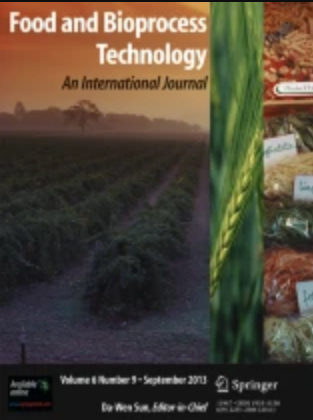A Comparative Study of the Extraction of Pectin from Kinnow (Citrus reticulata) Peel Using Different Techniques
Abstract
Abstract
Fruit waste has considerable potential for valorization as a pectin source. This research work concentrated on assessing the ability of kinnow (Citrus reticulata) peel as a raw material for pectin isolation. Pectin was isolated from kinnow peel through conventional methods (aqueous extraction and acid-assisted extraction) and novel green methods (microwave and ultrasound-assisted extraction). The pectin obtained with these techniques was analyzed and compared in terms of yield and physicochemical properties. The pectin yield ranged from 18.57% (aqueous extraction) to 30.59% (ultrasound-assisted extraction). The isolated pectin contained methoxyl (5.8 to 7.2%), anhydrouronic acid (57.6 to 73.4%), degree of esterification (55.7 to 80%), and galacturonic acid (64.5 to 68.2%). Structural analysis by Fourier transform infrared spectroscopy and X-ray diffraction showed that the pectin extracted was pure, crystalline, and of high methoxyl in nature. The scanning electron microscopy result showed that the ultrasonic treatment affected the pectin matrix, thus causing the disruption of bonds between pectin molecules. According to the result of characterization, it can be concluded that novel green technologies provide better pectin in terms of yield and quality in comparison with conventional techniques.

 求助内容:
求助内容: 应助结果提醒方式:
应助结果提醒方式:


